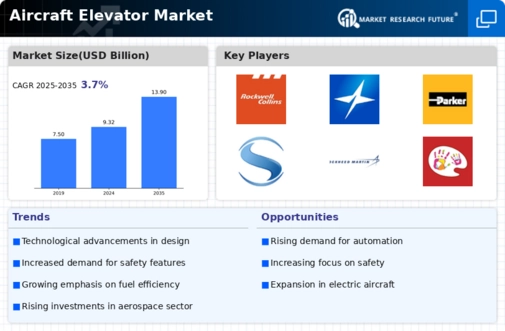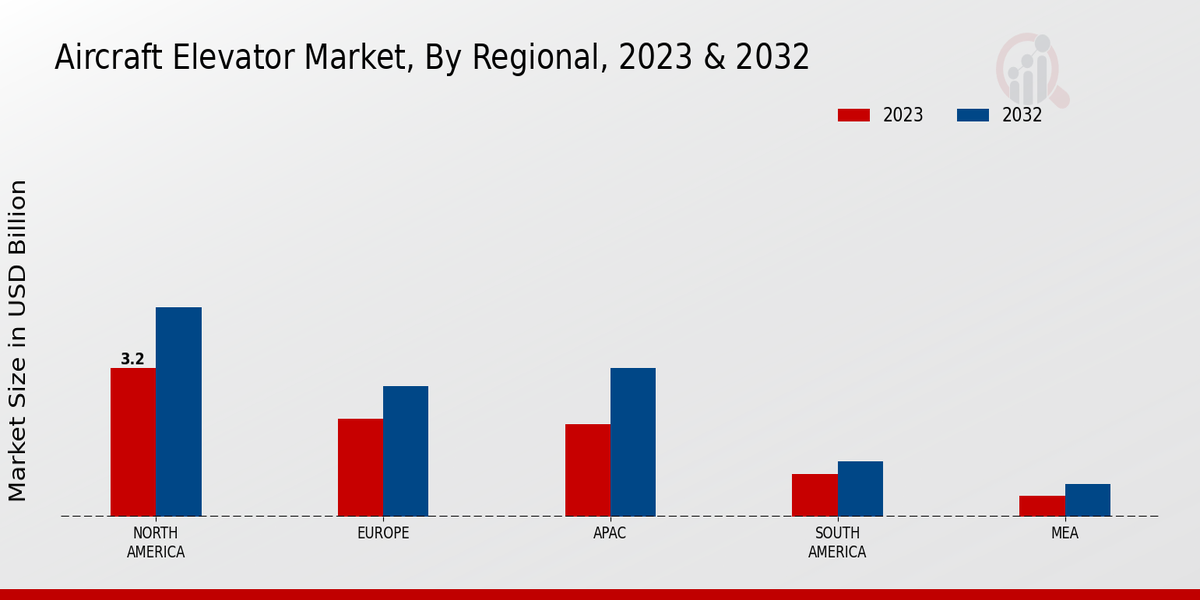Market Trends and Growth Projections
The Global Aircraft Elevator Market Industry is characterized by various trends and growth projections that indicate a positive outlook. The market is expected to reach a value of 13.9 USD Billion by 2035, reflecting a steady increase in demand for advanced elevator systems. Factors such as technological advancements, regulatory compliance, and the growth of the commercial aviation sector contribute to this upward trajectory. Additionally, emerging markets are likely to play a pivotal role in shaping the future of the industry. The combination of these trends suggests that the Global Aircraft Elevator Market Industry is on a path of sustained growth, driven by innovation and evolving market dynamics.
Emerging Markets and Regional Expansion
Emerging markets present significant opportunities for the Global Aircraft Elevator Market Industry. Regions such as Asia-Pacific and Latin America are witnessing rapid growth in air travel, prompting investments in aviation infrastructure and new aircraft. This regional expansion is likely to drive demand for advanced elevator systems as manufacturers seek to cater to the needs of these burgeoning markets. The projected CAGR of 3.68% from 2025 to 2035 indicates a sustained interest in developing aircraft technologies in these regions. As airlines in emerging markets strive to enhance their operational capabilities, the Global Aircraft Elevator Market Industry is expected to benefit from this trend.
Increasing Demand for Advanced Aircraft
The Global Aircraft Elevator Market Industry experiences a surge in demand for advanced aircraft, driven by the need for enhanced performance and safety features. As airlines and manufacturers focus on improving operational efficiency, the integration of sophisticated elevator systems becomes paramount. This trend is reflected in the projected market value of 9.32 USD Billion in 2024, indicating a robust growth trajectory. The emphasis on fuel efficiency and reduced maintenance costs further propels the adoption of innovative elevator technologies. Consequently, the Global Aircraft Elevator Market Industry is poised for expansion as manufacturers seek to meet the evolving demands of the aviation sector.
Growth of the Commercial Aviation Sector
The growth of the commercial aviation sector is a primary driver of the Global Aircraft Elevator Market Industry. As air travel continues to expand globally, airlines are investing in new aircraft to accommodate increasing passenger demand. This expansion necessitates the incorporation of advanced elevator systems to ensure optimal performance and safety. The market's projected value of 9.32 USD Billion in 2024 reflects this trend, as manufacturers respond to the rising demand for efficient and reliable aircraft. Furthermore, the anticipated growth in air traffic suggests that the Global Aircraft Elevator Market Industry will continue to thrive as airlines seek to enhance their fleets.
Regulatory Compliance and Safety Standards
Regulatory compliance and safety standards significantly influence the Global Aircraft Elevator Market Industry. Governments and aviation authorities impose stringent regulations to ensure the safety and reliability of aircraft systems, including elevators. Compliance with these regulations often necessitates the adoption of advanced technologies and materials, thereby driving market growth. The increasing focus on safety in aviation, coupled with the need for manufacturers to adhere to these standards, suggests a steady demand for innovative elevator solutions. This trend is likely to contribute to the market's projected CAGR of 3.68% from 2025 to 2035, as companies strive to meet evolving regulatory requirements.
Technological Advancements in Elevator Systems
Technological advancements play a crucial role in shaping the Global Aircraft Elevator Market Industry. Innovations such as fly-by-wire systems and advanced materials contribute to the development of more efficient and reliable elevator mechanisms. These advancements not only enhance the performance of aircraft but also improve safety standards, which is increasingly important in the aviation industry. As a result, the market is expected to grow, with a projected value of 13.9 USD Billion by 2035. The continuous evolution of technology suggests that manufacturers will increasingly invest in research and development to create cutting-edge elevator systems that meet the demands of modern aviation.


























Leave a Comment